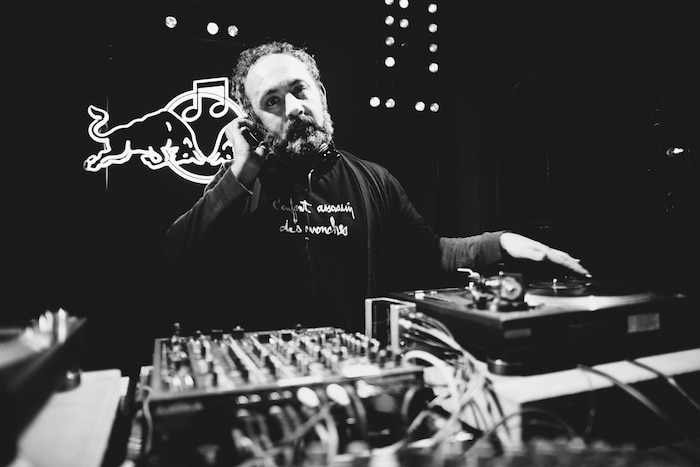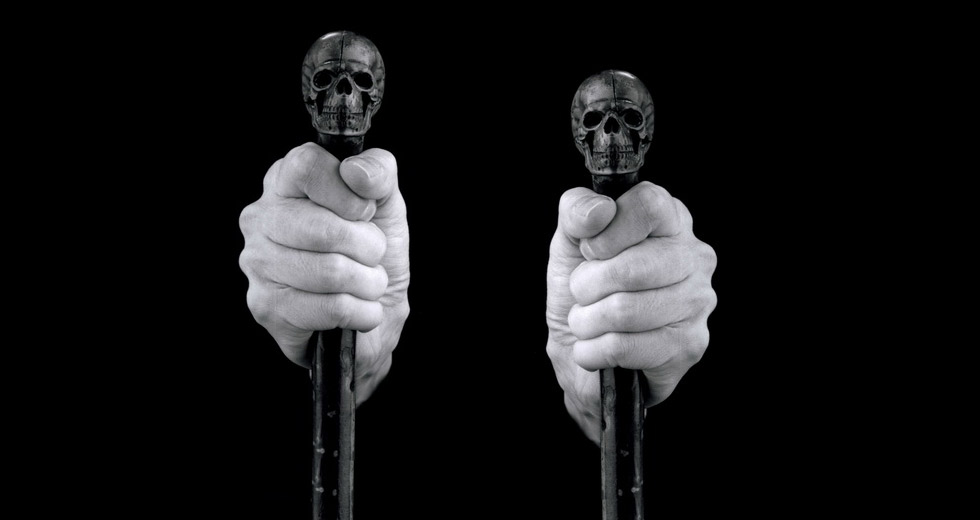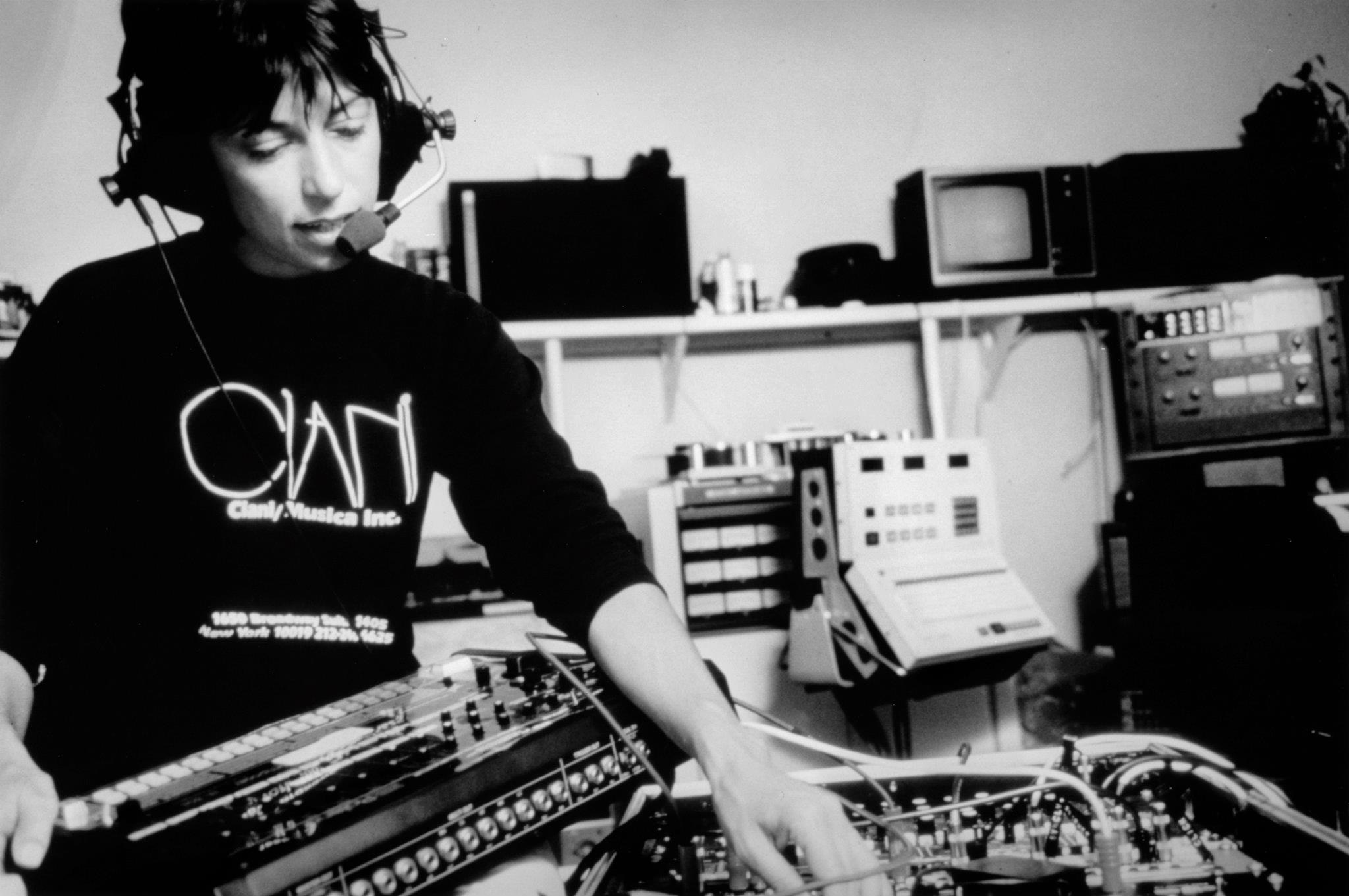Andy Votel’s Top 15 Horror Soundtracks, Pt. 2
The producer and DJ shares his favorite fear-inducing soundscapes

Andy Votel is not only a musician, DJ, producer and graphic designer, but also a purveyor of multiple record labels, including Twisted Nerve (operated with Badly Drawn Boy), Pre-Cert Home Entertainment (a joint venture with Demdike Stare) and the preeminent reissue goldmine Finders Keepers. Between a myriad of creative projects, he’s also found the time to become an absolute expert in horror cinema – a love that infuses much of his other work. A few years ago, we asked him for a list of some of his favourite horror film soundtracks, and received a stunning chart of unknown gems. It was such a success –and Votel had so many more that he wanted to share – that we asked him to do it again.
Night Of Fear, John Baker (1972)
Originally produced as one of two aired pilots in a series of hour long horror dramas for an Australian TV network this stray-path shack-massacre sleaze-fest threw the unsuspecting viewer in at the deep end of the ravine and kept its foot on his/her head for 57 minutes of claustrophobic gratuitous hell. Offering little reprieve or explanation for its brutality – and thus obliterating any chance of a second series (or any further episodes) – this lost slash of Ozploitation deployed a soundtrack of relentless mod-synth and tape-abusive techno-tension that went uncredited for 40 years before rearing its head on a UK library LP by Radiophonic Workshop dab-hand John Baker (hiding behind the name John Matthews). A key film in a micro genre of rural Aussie backwoods panic picnics (alongside Lost Weekend and Wake in Fright) this “hicksploitation” anti-classic leaves very little to the imagination. The novelty-factor in the casting of Briony Behets (from Prisoner Cell Block H / Neighbours / Flying Doctors) might momentarily entertain you, but the lead character will wipe that smug grin of your face the second he takes his oil-stained jeans off. Sorry for starting with this one... read on at your own risk.
Whatever Happened To Rosemary’s Baby,
Charles Bernstein (1976)
The idea of doing an uninvited sequel to a Polanski film is perhaps akin to remixing Kraftwerk or releasing a Kate Bush covers album. Thankfully no cast and crew members of the original Rosemary’s Baby – apart from actress Ruth Gordon who reprised her role as Minnie Castevet – elected to take part when the misguided TV movie sequel Rosemary’s Baby 2 went into production in 1976. The answer to the question that forms the film’s full title Whatever Happened to Rosemary’s Baby? is obvious isn’t it... He joined a psychedelic New Wave glam rock band called Captain Nitro and His Acid Kings, of course, and herein lies the z-movie’s greatest attribute. Horror composer Charles Bernstein provided the approxi-punk-funk from behind the scenes in this psychotronic classic that preceeded his work on video shop mainstays April Fools Day and Deadly Friend.
A Quiet Place In The Country, Gruppo di Improvvisazione Nuova Consonanza (1968)
Imagine an Italian giallo film that combines the bondage of Steven King’s Misery, the red cloak Venetian visions of Nicolas Roeg’s Don’t Look Now, the abandoned Italian mansion theme of Profondo Rosso, the schizoid murderous fantasies of José Larraz’s Symptoms or Juraj Herz’ Cremator, the artsploitation visuals of Bird With The Crystal Plumage and the psychiatric institutionalised corruption of A Clockwork Orange... could this be your all-time favourite psychological thriller??? Well add some Stan Brakhage style graphics and a soundtrack by none other than Morricone’s Gruppo di Improvvisazione Nuova Consonanza and the answer is, yes! Meet your favourite film that you’ve not seen yet. Hard to track down in any format for years (until recently) this film is one of the few features that “officially” boasts “Gruppo” as the improvised soundtrackers (alongside Enzo G. Castellari’s Cold Eyes Of Fear) where other soundalikes invite mere speculation. And on top of this we have arrangements by Bruno Nicolai and vocalisations from Edda Dell’orso. Sounds like the holy grail of Italian soundtracks, huh? IT IS! A genuine example of the tiny vintage art-house-horror bracket alongside the likes of Zulawski’s Possession, Polanski’s Repulsion / Tenant and the aforementioned Don’t Look Now, this film ticks some big boxes.
Hausu, Asei Kobayashi / Mickie Yoshino (1977)
The Japanese pop-art black comedy House (AKA Hausu – spoke in baritone-al Japanese voice-over style) can only really be described as ABSOLUTELY BAT SHIT CRAZY! With its Lynchian dream states and artificial scenery, its Japanese schmaltz, its banana-splits make-up effects, and its shiny Nippon funk fusion score, this must-see-movie was an all time personal favourite for over a decade courtesy of a shoddy VHS bootleg which didn’t even have subtitles. ’80s Yamaha keyboard funk ballads and romantic sax solos are a good thing in Eastern Horror, right? To tell the truth I already sold the original soundtrack album once, then after watching the film again desperately tracked down another copy on account of its occasional bursts of pure Goblin prog-funk such as the track “Eat Eat.” In a film in which pianos eat schoolgirls and psychedelic animation envelops real-actors (a la The Phantom Toll Booth and Nightmare On Elms Street Pt. 6!) anything goes really. The soundtrack was made by the same group who would later do the music for Monkey Magic and The Water Margin so hopefully that will give you a fair indication of what levels of weiiiird were dealing with here.
Ursula, Robert Aquino (1961)
This mind-blowing 16mm short film from 1961 about a “little girl” who murders her mentally abusive mother in return for killing her pet bird is possibly one of the most disturbing selections on this list due to its acidic hallucinogenic qualities and its bizarre use of sound. Chosen here for its soundtrack in the wider sense of the phrase – encompassing sound design and dialogue – this ten minute short by gay experimental and oft autobiographical American independent director Lloyd Michael Williams might draw striking comparisons to David Lynch’s The Grandmother from 1970. But the origins of the story (taken from a novella called “Miss Gentilbelle” by Twilight Zone writer Charles Beaumont) have their roots further back into the early 1950’s.
Williams’ use of an overdubbed adult New Yorker to provide Ursula’s voice is spooky enough, but when it clicks that the girl is in fact a boy who is forced by his mother to dress in female clothes then things get a bit too much. (The neo-classical soundtrack music by Robert Aquino does very little to ease the pain.) Staged against a black studio akin to the dream sequences in Lizard In A Woman’s Skin (Lucio Fulci) and All the Colours Of The Dark (Sergio Martino), mixed with solarised forests and double exposure layering, this short also makes some great use of early electronics and white noise manipulations. Williams would later work with synthesizer pioneer Suzanne Ciani on another short called Rainbow Children which provides further testimony to his attention to sonic detail and good taste... in music that is.
Blood Stained Shadow, Stelvio Cipriani (1977)
While witnessing what must be the band’s 9th resurgence / reformation / long awaited comeback / critical reappraisal etc. etc. hardcore Goblin fans will remember what it was like to first hear their lost soundtrack (in collaboration with Stelvio Cipriani) to Antonio Bido’s Blood Stained Shadow courtesy of Peter Blumenstocks Lucertola label (the ones who first compiled the Vampyros Lesbos sound track trilogy). Here it’s back to Venice for this slasher / murder mystery made in a similar vein to Profondo Rosso and Aldo Lado’s Who Saw Her Die – and never have those historical building and canals smelled so funky. Recorded in 1978 around the time of Claudio Simonetti’s first departure from Goblin, Solamente Nero takes the same bass-driven beat-laden blue-print deployed for tracks like “Snip-Snap” (from Roller / Patrick) and “Heroin Busters” (from the previous year) resulting in a more groove-based affair, leaving the prog-gymnastics at the door and presumably dividing the band’s multiplying fan base into two camps: prog-funk? Or funky-prog?
Ferat Vampire, Petr Hapka (1982)
Anybody fancy coming round to watch a Czech horror video about a souped-up Skoda that runs on human blood? Anybody? No? This 1981 film comes across like Back To The Future meets Christine on account of its central futuristic flip-top sports car and strikes a little resemblance to a possessed Knight-Rider in the process. Petr Hapka’s score is a slow burner but progressively veers towards brooding Vangelis-esque electronics and pulsating New Wave as the threadbare plot thickens. Are you still reading this?
Reincarnation of Isobel, Gianfranco Reverberi (1973)
Here we have the obscure ritualistic funk soundtrack to Renato Polselli’s Reincarnation of Isobel composed by library music stalwart Gianfranco Reverberi (an artist that Gnarls Barkley owes a lot to!) for a film that also goes by the name of Rites, Black Magic and Secret Orgies in the Fourteenth Century! This movie’s bizarre feature-length funk-rock score does little to authenticate the vintage of the film’s plot and brings psych, synth and sound effects to the proceedings (to match the actors’ medieval digital watches and zip-up jackets) including gems such as the impending bass and percussion driven title sequence. Complete with explicit feminine vocalisations and sedated Euro mock afro-rock textures, this rare theme rises to the challenge of providing a musical backdrop for a film that combines witchcraft, vampires and zombies in this alleged true story that could also be described as “An X-rated 1970s take on Benjamin Christensen’s 1922 film Haxan.”
Rose De Fer, Pierre Raph (1973)
A true enigma in French exploitation cinema and a key exponent in Jean Rollin’s expansive family of forward-thinking French creatives, Pierre Raph delivered four soundtrack commissions to the ABC film company between 1971 and 1974 commencing with Requiem Pour Un Vampire and ending with the bizarre Les Démoniaques. The lost score for the film Le Rose De Fer from 1972 presented a new challenge for both director and composer, marking Rollin’s departure from his vampire movie comfort zone to this surreal melodramatic ghost sex story and resulting in perhaps the duo’s most unique collaboration. Combining bizarre vocalisations, stripped down minimal piano and subtle Parisian funk themes (echoing the likes of Alain Goraguer’s La Planete Sauvage and Karl Heinz Schäfer’s Les Gants Blancs Du Diable) Le Rose De Fer arguably hears Raph at his most accomplished, adhering to a solid consistent theme tune and using a varied range of disciplines to convey it via the film’s precarious schizoid screenplay. For fans of Rollin regulars Acanthus, Philippe d’Aram and Francois Tusques, this release is essential. But as a standalone piece, Le Rose De Fer is totally unique and, like the film itself, succeeds as the tortoise champion taking first place on many long-term Rollinades lists while his trademark vamps dodge the sunlight.
The Plumber, Peter Weir (1978)
You’ve seen The Butcher, The Exorcist, The Omen and The Sentinel. Now meet a new breed of terror... The Plumber? After garnering international acclaim with his stunning Picnic at Hanging Rock how on earth was Peter Weir ever going to retain his title as Australia’s new leading light? How about a horror film about a plumber who takes too long. File this one under the collective genre “Get The Fuck Out Of My House Films” alongside The Shout, Cape Fear and Pacific Heights. Most of the tension in this score is based on cues from KPM libraries but the use of song in the screenplay is pretty central to the psychotic behaviour of the the main character Max (played by a TV actor called Ivar Kant). If you want me to tell you that no future stars of Home & Away or Neighbours were hurt in the making of this film, well I’m afraid I’ll have to respectfully decline.
Phantasm, Fred Myrow / Malcolm Seagrave (1979)
Anyone who was parented by a top-loader in the early 1980s will remember craving the attention of your real biological mum after having nightmares about Angus Scrimm and his gigantic balls! Probably the most well known addition to this list, the soundtrack to the first film in Don Coscarelli’s Phantasm franchise is an all-time classic in the realms of mid-tempo, electric piano and electronic effects horror head-nodders. Finding an acute equidistance between the work of Goblin AND John Carpenter, this film’s main theme is often mistaken for either band when given a DJ airing. 40-year-old co-composer Fred Myrow had previously worked on horror soundtracks like Soylent Green and Reflection of Fear before teaming up with college graduate buddy Malcolm Seagrave in what would be Seagrave’s only score before moving into operatic disciplines. The Carpenter comparison is further justified by the fact that Myrow had already teamed up with John Howarth for extra synths by the time he was asked to return for Phantasm 2. The original article remains the best though and even includes a cosmic disco mock-up (with live drums) to rock your Halloween party dance floor.
Werewolves On Wheels, Don Gere (1971)
VHS vultures gather round and prepare yourselves for what could only be described as a cinematic speedball. Take a combined hit of two of the most potent strains of toxic cinema (biker movies and horror movies), swap your leathers for ritualistic robes and have-it-large to the beat of a stoned, motoric-like, country commune soundtrack. Cut from the same oily cloth as other satanic-cycle flicks Psychomania and Stone, this directorial debut by an ex-Roger Corman protege and future Russ Meyer art director shows what happens when some thirsty wannabe Hells Angels pinch the congregational wine from the wrong church... The Church Of Satan, to be exact! While each member of “The Devil’s Advocates M.C” slowly turn into salivating lycanthropes, guitarist Don Gere (him of Don & Stevie, Curt Boettcher fame) cuts sonic images akin to Sandy Bull jamming with Munich’s Amon Düül 1 or some Swedish prog outfit like Trad, Gras och Stenar doing the road movie thang. Obliterating the predictable late 60’s Curb/Allan scores for films like Devil’s Angels, Thunder Alley, and Born Losers (often released on Curb’s own Sidewalk label), Don Gere’s 1971 take on biker-psych sounds like it’s from an entirely different generation. File Under: W.O.W!
Toby Dammit, Nino Rota (1968)
For these johnny-come-lately Giallo name droppers (...and it’s never too late to join the party) take a bit of time out to meet the parents. If Fellini’s Juliette of the Spirits was the director’s first foray into the supernatural then the short film Toby Dammit for the Edgar Poe magazine compendium Spirits of the Dead is positively his most Gialloesque moment. Seizing the Italian presence of Terence Stamp (who had just worked on Pasolini’s immaculate film Teorema) and bleaching the actor’s hair diamond white (for further Lynchian kicks) Fellini re-imagined the Poe fable “Never Bet the Devil Your Head” and threw a Ferrari, a young alcoholic Shakespearean actor and a ghostly apparition of a pale faced young girl with a red ball (Don’t Look Now again anybody?) into this “heady” mix. Nino Rota applied his signature mix of pensive piano motifs, solo clarinets and electric organs, switching between the grandiose and the painfully lonesome. Including none of the clichéd sound effects you’d expect to find in a European horror soundtrack, Nino’s score remains as disturbing as waking up with an Italian clown stood at the end of your bed.
Coven, Patrick Nettesheim (2000)
I’m wondering how many people who watched that awesome 1999 documentary American Movie (the one about a couple of guys from Milwaukee trying to fund a low budget horror film) actually sat through main-man Mark Borchardt’s completed film Coven after the titles has rolled... Well, if you didn’t you missed out on a great soundtrack of detuned piano strings, choral effects, off-the-shelf drum machines and white noise rises. I reckon a vinyl pressing in 2015 could help fund a sequel.
The Devil, Andrzej Korzynski (1972)
Part history lesson, part 18th century schizophrenic slasher jam, wholly original. Possibly the most freakish and fantastic film from the turbulent career of Andrzej Żuławski (Possession), this 1972 slice of Polish psych cinema stylistically combines the chaos of Ken Russell’s The Devils, cinematic Euro prog rock sounds akin to Herzog/Popul Vuh, and Eastern Europe’s natural avant garde leanings shared by Polanski, Skolimowski and Wojciech Has. This epic banquet of Jodorowsky-worthy indulgent celluloid follows madman Jakub (played by Żuławski regular Leszek Teleszynski) on his rampage across the Polish countryside after the Prussian invasion of 1793. Accompanied by an awesome wailing Krautrockisch soundtrack by Andrzej Korzynski, Jakub encounters bloody scenes of pillaged monasteries, decadent ballroom orgies, perverted judges and one of the most dysfunctional family reunions committed to film. During his travels Jakub is joined by a persuasive and manipulative sidekick, The Devil himself, whose presence betrays the true meaning of this important political allegory. Naturally, the nature of the film saw it join Zulawski’s other “banned” films in the “un-screenable” can for over twenty years. Fans of Terayama, Jodorowsky, Rollin and general cinematic rural terror will all eventually have sympathy for The Devil.

